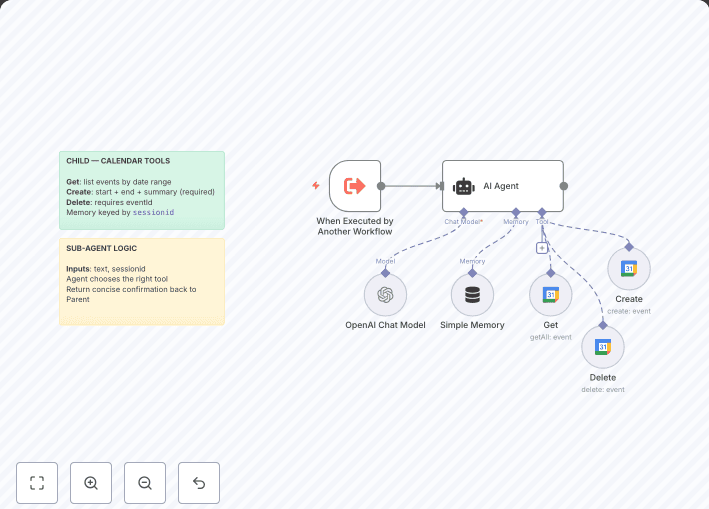The job search process is filled with manual, frustrating tasks—reading endless job descriptions only to find the seniority is wrong, the role requires a language you don't speak, or a "hybrid" job has an impossible commute.
This workflow acts as a personal AI assistant that automates the entire top of your job search funnel. It doesn't just find jobs; it reads the full description, checks the commute time from your home, filters by your specific criteria, and even compares the job requirements against your CV to calculate a match score. It's a personalized, decision-making engine that only alerts you to the opportunities that are a perfect fit.
The workflow is designed to be fully customized from a single Config node and runs in a multi-layered sequence to find and qualify job opportunities.
This workflow is designed for easy setup, with most personal preferences controlled from a single node.
Almost all customization is done in the Config node. Open it and set the following parameters to match your personal job search criteria:
MyCV: Paste the full text of your CV/resume here. This is used by the AI to compare your skills against the job requirements.
JobKeywords: Search keywords for jobs (e.g., "engineer", "product manager").
JobsToScrape: The maximum number of relevant job postings to scrape in each run.
HomeLocation: Your home city and country (e.g., "Breda, Netherlands"). This is used as the starting point for calculating commute times for hybrid or onsite jobs.
MaxCommuteMinutes: Your personal maximum one-way commute time in minutes. The workflow will filter out any jobs that require a longer travel time.
TargetLanguage: Your preferred language for job postings. The workflow will filter out any jobs not written in this language. You can list multiple languages, separated by a comma.
ExperienceLevel: The seniority level you are looking for. The AI will validate this against the job description.
The value can be:
"" → (Any) "internship" → (Internship) "entry" → (Entry Level) "associate" → (Associate) "mid_senior" → (Mid-Senior Level) "director" → (Director) "executive" → (Executive)
Under10Applicants: Set to true if you only want to see jobs with fewer than 10 applicants. Set to false to see all jobs.
After setting up the Config node, configure the Supabase and Telegram nodes with your specific credentials and table/chat details.
This workflow is a powerful framework for any search and qualification process.
RSS Feed Reader node to get jobs from sites that provide feeds.

